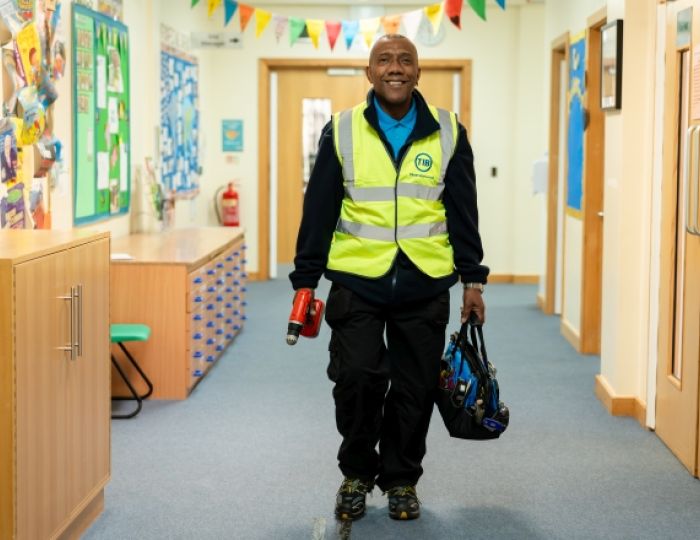It’s becoming ever harder to miss the signs of a funding crisis within our schools. Leaders and managers talk of reduced incomes and ever-growing spending obligations, while the media carry reports of schools having to balance their budgets by axing posts.
It could be argued that shedding staff will inevitably lead to poorer outcomes for children, but many schools struggling with budget issues simply see no other solution.
Still, if there’s one thing we can expect school staff to be able to demonstrate, it’s creativity and flexibility. Could a willingness on the part of schools to experiment with their timetables and staffing procedures offer a way out of the precarious financial situation many now face?
Luxury or necessity?
The biggest single spend in schools is on staffing, which will typically account for around 75% of the school budget – and of that, approximately 20% will go towards employing Teaching Assistants. TAs have been around since the eighties, but their popularity in schools really took off in the late nineties. Once timetabled PPA time came into being in 2005, schools across the country immediately saw the attraction of taking on TAs who could provide partial class cover.
With the educational needs of children in mainstream schools having become increasingly complex in recent years, it can be hard to imagine now how schools managed before TAs became such a fixture in classrooms. TAs are professionals in their own right, working to rigorous standards – and yet in the current climate, TA posts are fast becoming something viewed as a luxury, rather than a necessity.
Another trend in recent years has been the rise in children with SEND entering mainstream schools, resulting in a greater need for one-to-one support within classrooms that’s often provided by an LSA or TA. For schools with high numbers of SEN or EAL children, the support TAs provide can be crucially important for the children’s development. Such schools are therefore likely to employ more TAs than most, and in some instances it’s not unusual to see two or more TAs working in the same class.
But if this ‘luxury’ of excess classroom support staff might be no longer sustainable, perhaps the time has come to reassess how they’re deployed within a school. If a class has more than one TA, the SLT should examine why that’s the case, whether it’s a necessity, how much it’s costing the school and whether any changes could be made.
Working as directed
With the current financial climate being what it is, the time has come for senior leaders and governors to make honest and realistic decisions for how to proceed when a TA leaves or retires. Schools should look at whether adaptations can be made to the timetable, so that one-to-one TA support can be provided more flexibly across classes.
However, there can be a particular challenge where a TA has been employed to work with a specific child or class, raising the prospect of teachers becoming over-reliant on certain individuals. All too often, we’ll hear references to ‘my TA’, when in fact TAs should be employed to work as directed by the school.
When TAs are employed to work at the school in general, rather than with a specific class, they can be placed wherever they’re most needed according to pupils’ needs (though it’s important to involve your SENCo in any decisions concerning TAs’ support for children with SEND).
A TA could therefore find themselves in Reception during the mornings, providing one-to-one support for a child with SEND, and then lending general classroom support to different groups of children throughout the afternoon. That can be helpful for individuals’ career progression, as they’ll get to see for themselves how learning and development needs differ between year groups.
Contracted hours
Here’s how the approach looks in practice. One school in London employed a higher level teaching assistant (HLTA) who had been assigned more senior responsibilities than the rest of the team, and was therefore on a higher pay scale. When she retired, the SLT reviewed the role and made the decision not to replace her, taking into account that most of the school’s other TAs were long-serving, with years of experience and thus in a position to carry out some of the outgoing HLTA’s duties.
The school then took the opportunity to reassess how its classroom-based support staff members were deployed, and reviewed the hours that they were employed to work. Most were employed on 36-hour contracts, working until 4.15pm. These staff were using the time after school to help prepare for the next day, or to assist with after-school clubs.
The SLT, however, felt that realistically, those TAs’ hours could be reduced, since their attendance at preparation wasn’t a necessity and because those afterschool clubs were led by teachers or external agencies.
The school is now looking at offering reduced hours to its support staff. While there’s no guarantee that the staff will accept those lowered hours, there may equally be a proportion willing to see them reduced to around 30 per week if it will help alleviate financial pressure on the school without losing too much in the way of valuable teaching time.
Spreading the cost
Something else we’ve seen from government lately has been a push for collaborative working. Many SBLs now regularly work with neighbouring schools to try and secure better procurement deals, for example – and that type of joined-up working should be extended to staffing.
Sharing support staff between schools can help free up valuable funds, whilst still allowing schools to enjoy the benefits that skilled and experienced staff have to offer. A different school in London recently took the step of ‘loaning’ three of its TAs to a neighbouring school, so that said staff’s expertise could be shared while the costs of employing them were spread out.
This is an excellent model of good practice, which can ensure that good quality staff are retained without impacting on budgets too heavily. The staff in question will obviously gain experience and practice of other settings in their local area too – knowledge which can then be brought back to the school they’re based at.
Staff morale is important. With stories rife throughout the education sector of support staff losing their jobs, it’s more important than ever for senior leaders to recognise the fears many support staff understandably have, and the impact this can have on staff morale.
If changes have to be made – whether it be a reduction in your TAs’ hours, or adjustments to how they’re deployed – communication is key. Senior leaders have a crucial role in helping the staff in question understand the school’s position, whilst simultaneously reassuring them about their future.
When embarking on any major programme of change, an SLT should take a holistic approach and ask themselves a series of questions (see ‘10 holistic questions’). Having answered these, the school can then draw up a model that addresses whatever financial concerns the school might have, before presenting it to governors. If it’s then approved, the SBL and headteacher can start communicating to TAs what the changes will involve, and who knows – some of those TAs might well be more accommodating than originally expected.
10 holistic questions
If there’s nothing for it but to proceed with some far-reaching changes to your school’s use of TAs, be sure to first ask yourself the following:
- What cohorts of children do we have?
- What percentage of our children need one-to-one support?
- How many hours of one-to-one support does each pupil need?
- How many TAs do we have?
- How many of those TAs can provide one-to-one support?
- Are any of our TAs due to retire?
- Are any TAs planning to leave imminently?
- Which class requires the most support?
- Would any of our TAs be interested in reduced working hours?
- Would any of our TAs be interested in voluntary redundancy?
Caroline Collins is head of school business strategy and resources at Miles Coverdale Primary School.










